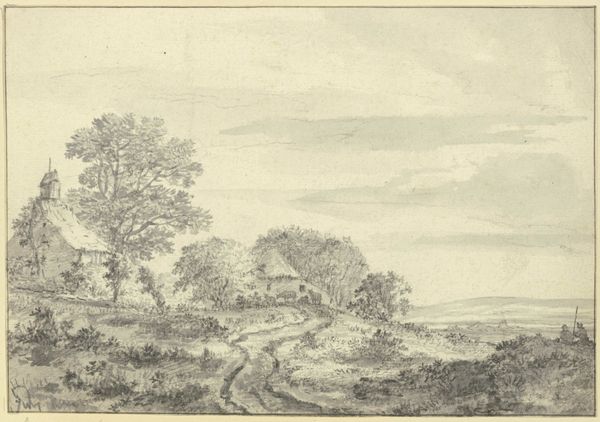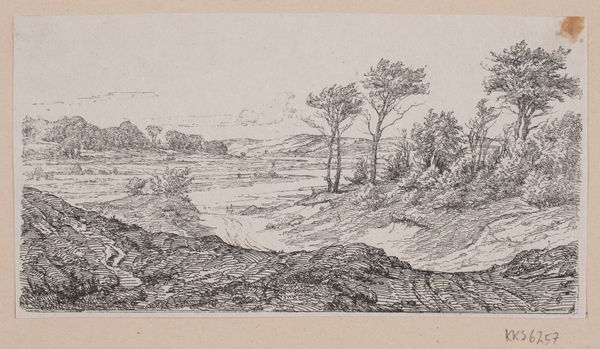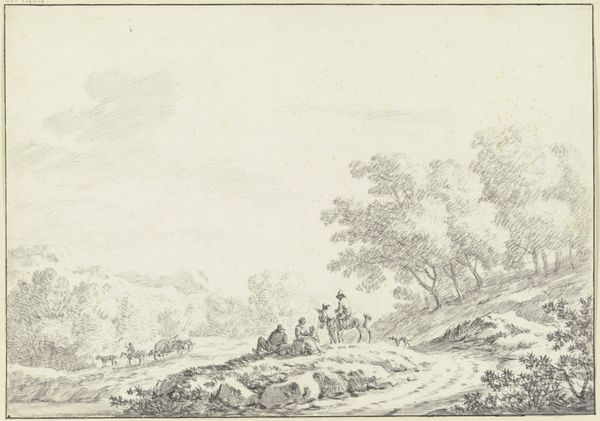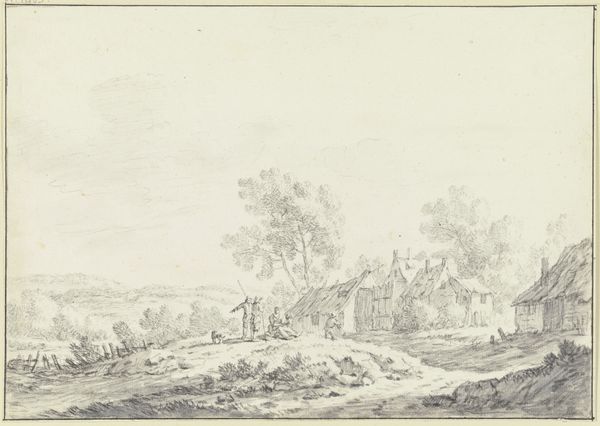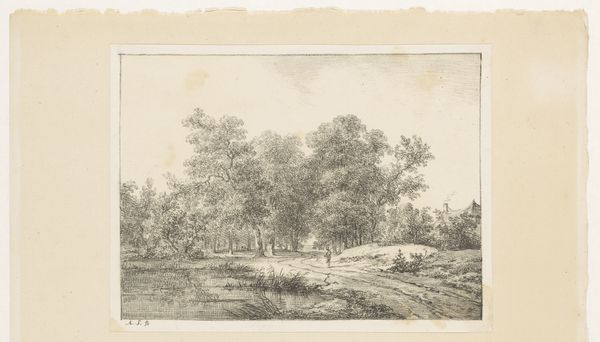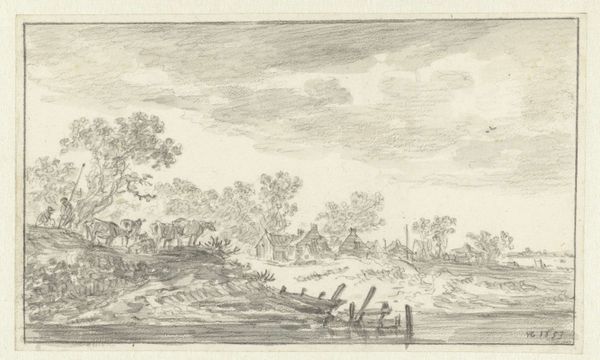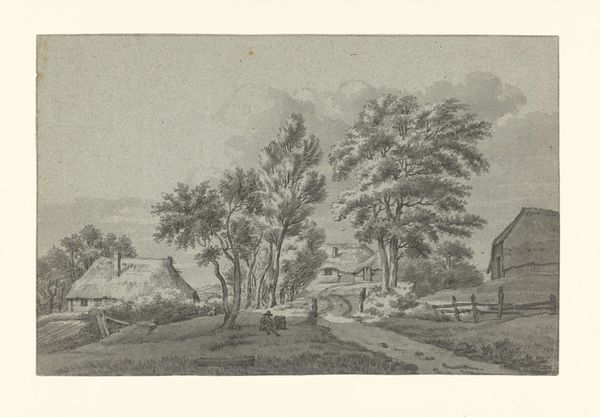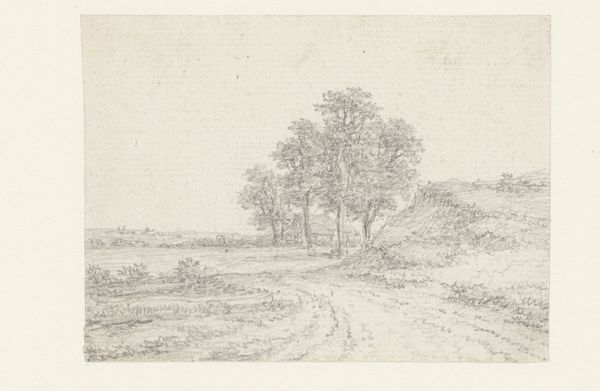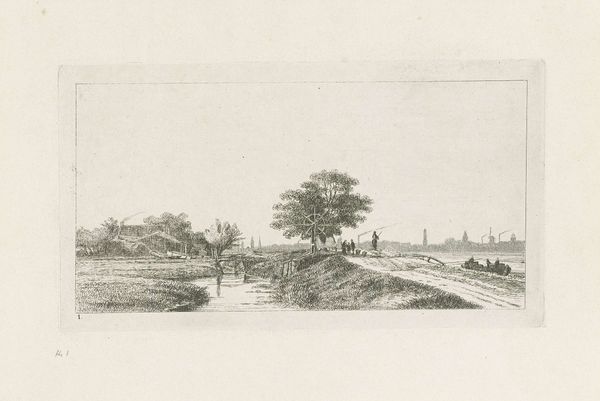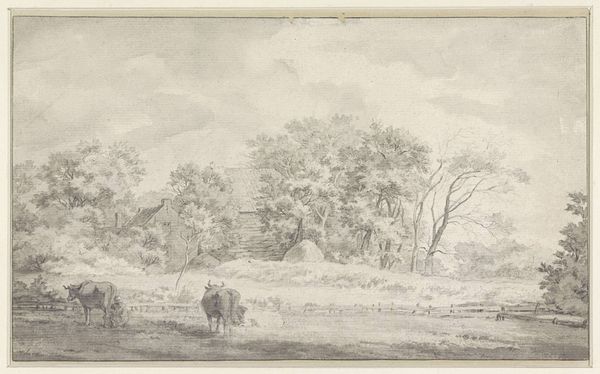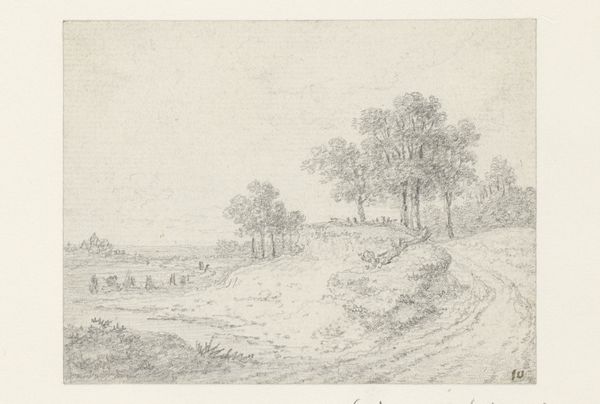
Dune Landscape with Figures along a Road, with a Cottage in the Distance c. 1650 - 1665
0:00
0:00
drawing, pencil
#
drawing
#
dutch-golden-age
#
landscape
#
pencil
#
realism
Dimensions: height 176 mm, width 270 mm
Copyright: Rijks Museum: Open Domain
Curator: Here we have "Dune Landscape with Figures along a Road, with a Cottage in the Distance," a drawing by Jan (I) Vermeer van Haarlem, created around 1650-1665. Editor: It feels so open, yet strangely contained by the low horizon line. The whole scene rendered in gentle grays evokes a sense of tranquility, even perhaps…melancholy. Curator: Observe the composition; Vermeer employs a distinct diagonal thrust, directing our gaze from the lower right, along the path, and into the distant scene. The texture of the dune grasses is carefully delineated using layered pencil strokes, aren’t they. Editor: That path – roads are laden with symbolic weight, especially in the 17th century. It represents the journey of life, pilgrimage, but here it seems almost ordinary. Are the figures perhaps meant to embody common folk? Curator: Possibly, but consider how Vermeer subtly disrupts realism. Note the disproportionate size of the clouds, relative to the other elements. This introduces a compositional tension, drawing our attention upwards. It unbalances the sense of realism. Editor: Those looming clouds… perhaps reflecting the transient nature of existence, the inevitable storms that disrupt our earthly travels. The Dutch, after all, were masters of allegorical landscapes. And even that humble cottage in the distance may signify shelter, or a desire for domestic tranquility. Curator: You may be right. However, I tend to see how the light subtly washes over the landscape, created entirely with graphite. Vermeer really demonstrates the dynamic range and possibilities of simple materials. The fence on the side and figures in the road provide spatial depth to the composition. Editor: In Vermeer’s era, landscapes were often imbued with nationalistic and moral meanings. The common man traversing his path through the dunes becomes not just a traveler but Everyman, navigating life's course in his Dutch homeland. Curator: Perhaps the genius lies in that tension: an ostensibly straightforward rendering that nonetheless subtly unsettles the viewer. Editor: It invites reflection – a glimpse into a seemingly simple landscape, yet one teeming with understated symbolism.
Comments
No comments
Be the first to comment and join the conversation on the ultimate creative platform.
